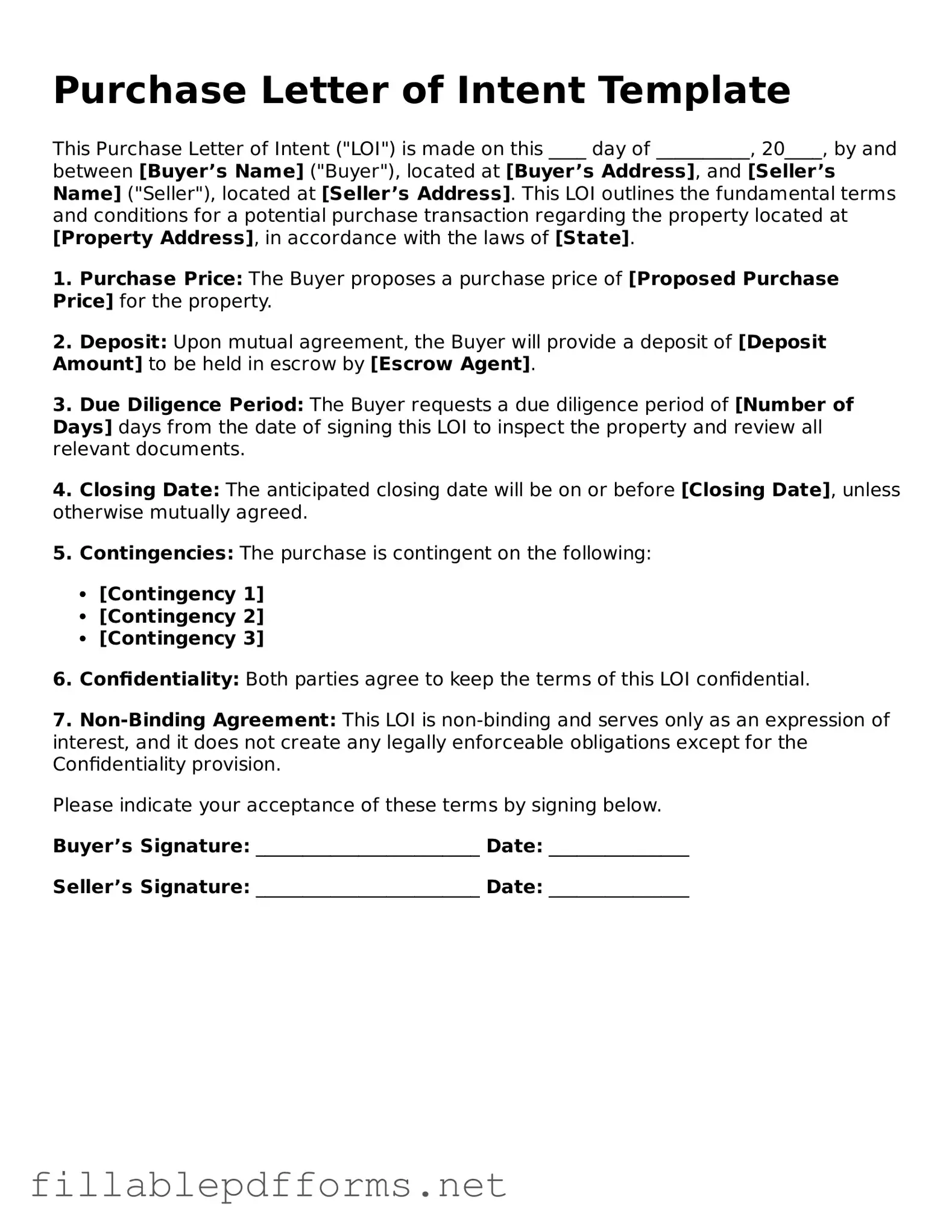Blank Purchase Letter of Intent Template
A Purchase Letter of Intent (LOI) is a document that outlines the preliminary agreement between a buyer and a seller regarding the purchase of a property or business. This form serves as a starting point for negotiations and sets the stage for a more detailed purchase agreement. By clearly stating the intentions of both parties, the LOI helps to ensure a smoother transaction process.
Launch Editor Here
